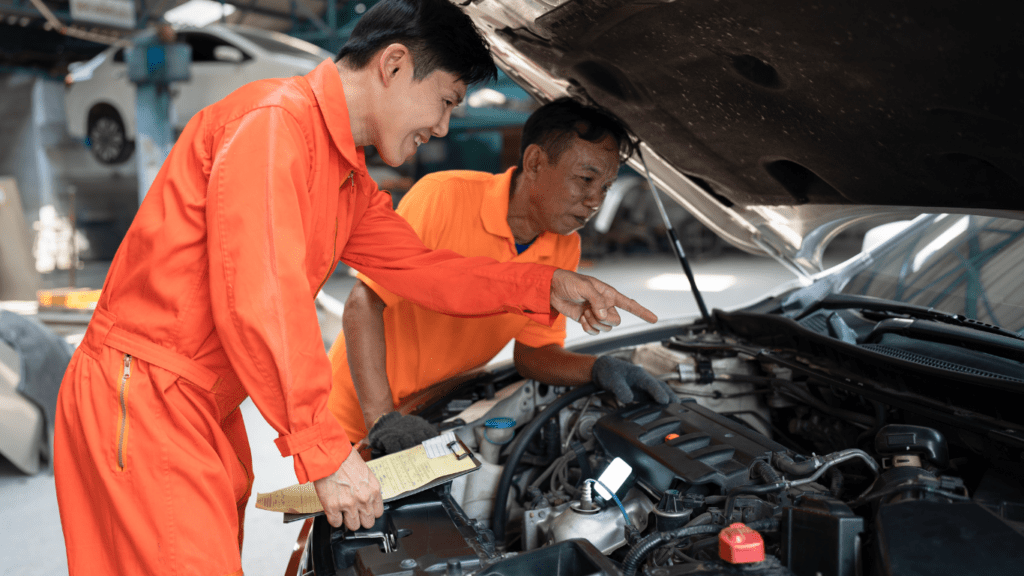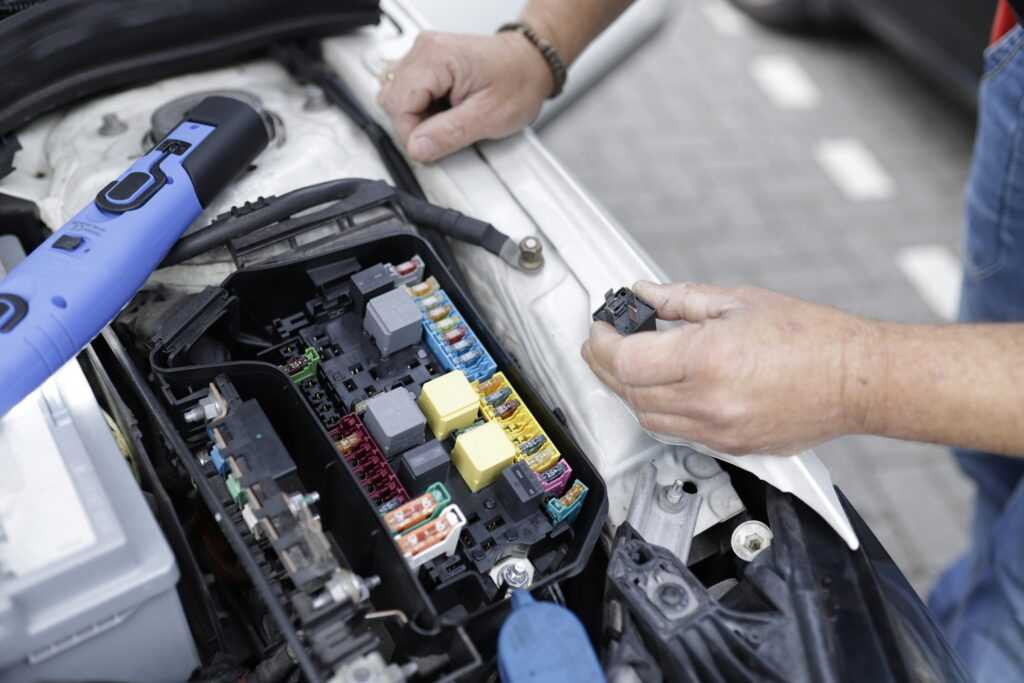Regular Oil Changes
Regular oil changes ensure engine health by providing proper lubrication. Over time, engine oil can accumulate dirt and debris, reducing its effectiveness. I recommend changing the oil every 3,000 to 5,000 miles, depending on your car and driving conditions. Use the manufacturer’s guidelines as a reference.
Fresh oil maximizes fuel efficiency by reducing engine friction. This simple maintenance can lead to fewer emissions, contributing to a cleaner environment. Check the oil level monthly and top up if necessary to maintain optimal engine performance.
Neglecting oil changes can cause engine wear and tear, leading to costly repairs. To avoid issues, follow a consistent schedule. Many service centers provide reminders and offer packages for regular maintenance, making it easier to keep track. Investing time in regular oil changes ensures a smoother, longer-lasting driving experience.
Check the Tire Pressure
Checking tire pressure regularly is crucial for vehicle safety and performance. Underinflated or overinflated tires can lead to various issues, making this simple task essential.
Importance of Correct Tire Pressure
Correct tire pressure ensures better handling and fuel efficiency. Underinflated tires, for example, create more friction against the road, which increases fuel consumption and accelerates tire wear. Overinflated tires reduce the contact area, leading to reduced traction and control. Both cases can result in uneven tire wear and potential blowouts, compromising safety.
How to Check Tire Pressure
To check tire pressure, use a reliable pressure gauge. First, remove the valve cap from one tire and press the gauge against the valve stem. Note the reading and compare it to the recommended level, which is usually found in the owner’s manual or on a sticker inside the driver’s door. If the pressure is low, add air until reaching the proper level. If it’s high, release air as needed. Repeat this process for all tires, including the spare, if applicable. Checking tire pressure monthly helps maintain optimal performance and safety.
Replace Air Filters
Replacing air filters is a vital part of car maintenance. A clean air filter ensures that the engine gets the right amount of air needed for combustion. It directly affects engine performance and efficiency.
Frequency: Most manufacturers recommend changing air filters every 12,000 to 15,000 miles. This frequency may vary based on driving conditions such as traffic congestion or dusty environments.
Signs of a Dirty Air Filter:
- Reduced Acceleration: A noticeable drop in acceleration can indicate a clogged filter.
- Engine Misfires: Dirty air filters can lead to uneven air-fuel mixtures, causing misfires.
- Unusual Engine Sounds: Clogged filters may cause popping sounds due to restricted airflow.
Checking and Replacing:
- Locate the Filter: The air filter is usually in a black box near the engine. Consult the vehicle’s manual for exact location.
- Inspect the Filter: Open the housing and check if the filter appears dirty or clogged.
- Replace if Necessary: If the filter looks clogged or hasn’t been replaced within the recommended mileage, install a new one to improve performance.
Benefits of a Clean Air Filter:
- Improved Fuel Efficiency: Clean air filters optimize air intake, enhancing fuel efficiency.
- Extended Engine Life: Keeping contaminants out of the engine prevents wear and tear, extending engine longevity.
- Reduced Emissions: Proper air-fuel mixture reduces exhaust emissions, promoting a healthier environment.
Replacing air filters is simple and pivotal for maintaining engine health and performance. Regular filter checks can save time and money.
Inspect Brakes
Regular brake inspections ensure safety and optimal vehicle performance.
Signs of Brake Wear
Scraping noises while braking indicate worn brake pads. Vibration during braking often signals warped rotors. A soft or spongy brake pedal suggests air in the brake lines or fluid leaks. Reduced responsiveness or pulling to one side during braking can denote uneven wear or caliper issues. Regularly inspect for these signs to catch brake wear early and avoid costly repairs.
When to Replace Brake Pads
Replace brake pads every 25,000 to 70,000 miles depending on driving conditions. Check manufacturer guidelines for specific recommendations. Frequent driving in stop-and-go traffic or on steep terrain accelerates wear. Inspect pads if you notice any signs of brake wear, ensuring timely replacements for continued safety.
Maintain Fluid Levels
Maintaining fluid levels is crucial for optimal vehicle performance and longevity. Each fluid serves a specific function and should be monitored regularly to ensure your car operates smoothly.
Engine Coolant
Engine coolant prevents your engine from overheating by regulating its temperature. Manufacturers recommend checking coolant levels at least every six months. Ensure the engine is cool before opening the radiator cap. Look for any visible indicators of low coolant, like color changes or residue. Top off with the correct coolant mixture if necessary. Failing to maintain proper coolant levels can lead to engine overheating, severe damage, and costly repairs.
Brake Fluid
Brake fluid is essential for effective braking performance. Experts suggest checking brake fluid levels whenever you change your oil or at least every six months. The reservoir is usually located near the back of the engine bay. Ensure fluid levels remain between the minimum and maximum lines. Low or dirty brake fluid can cause reduced braking efficiency or brake failure. If your brake fluid appears dirty or has a burnt smell, have it flushed and replaced by a professional.
Windshield Washer Fluid
Windshield washer fluid is essential for clear visibility during various weather conditions. Check the washer fluid reservoir monthly or during oil changes. It’s usually a translucent container marked with a windshield icon. Fill it with a washer fluid mix that prevents freezing in cold temperatures. A clean windshield ensures better driving safety by providing an unobstructed view of the road.
Check Battery Condition

Regularly checking your car’s battery condition can prevent unexpected breakdowns and extend battery life. A few simple maintenance steps ensure the battery remains in top shape.
Cleaning Battery Terminals
Keep battery terminals clean by removing corrosion and buildup, which can interfere with the electrical connection. First, turn off the engine and disconnect the battery cables—negative cable first. Use a mixture of baking soda and water with an old toothbrush to scrub the terminals. After cleaning, rinse with water and dry thoroughly. Reconnect the cables, ensuring the terminals are tight. Regular cleaning ensures a solid connection and maximizes battery performance.
Testing Battery Voltage
Regularly testing battery voltage can help you monitor its health and avoid sudden failures. Use a digital multimeter set to DC volts for an accurate reading. Connect the multimeter’s positive lead to the battery’s positive terminal and the negative lead to the negative terminal. A healthy battery should read between 12.4 and 12.7 volts when the engine’s off. If the voltage is below this range, consider charging the battery or having it tested by a professional. Regular voltage checks help catch potential issues early, ensuring reliable vehicle starts.
Keep Your Car Clean
A clean car not only looks good but also preserves the paint and interior, enhances safety, and maintains value over time. Following simple exterior and interior cleaning tips ensures a pristine and comfortable ride.
Exterior Cleaning Tips
- Wash Regularly: Use a mild car shampoo and a soft sponge. Avoid household detergents as they can strip protective wax.
- Wax the Car: Apply a quality car wax every three months. Waxing protects the paint from harmful UV rays and environmental contaminants.
- Clean the Wheels: Use specific wheel cleaners to remove brake dust and grime. A brush with soft bristles can reach tight areas.
- Inspect the Lights: Clean headlights and taillights using a suitable cleaner. Ensure they’re free of dirt to maintain visibility and safety.
- Vacuum Thoroughly: Regularly vacuum seats, carpets, and mats. Pay attention to crevices and areas under seats where dirt accumulates.
- Wipe Surfaces: Use a microfiber cloth and appropriate cleaner. Clean the dashboard, console, and other hard surfaces to remove dust and grime.
- Condition the Leather: Apply a leather conditioner to seats and other leather surfaces. This prevents cracking and keeps the material supple.
- Clean the Windows: Use an ammonia-free glass cleaner for interior windows. This ensures clear visibility without streaks.
- Remove Unpleasant Odors: Use odor eliminators or air fresheners. Baking soda can also be effective, especially for absorbing persistent smells.
Regular exterior and interior cleaning not only enhances your car’s appearance but also prolongs its life, making every drive more enjoyable.
Replace Windshield Wipers
Ensuring clear visibility in all weather conditions starts with effective windshield wipers. I recommend inspecting wiper blades for signs of wear every six months. Look for streaking, skipping, or squeaking during operation. These indicate that it’s time for new blades.
Select the right type of wiper blade for specific needs. Traditional rubber blades are cheaper and offer reasonable performance, while silicone blades last longer and perform better in extreme weather.
Installing new wiper blades is straightforward:
- Lift the wiper arm away from the windshield.
- Press the small tab on the wiper blade to release it.
- Slide the blade off the arm.
- Attach the new blade until it clicks into place.
Always choose high-quality wiper blades for optimal performance and longevity. Brands like Bosch, Rain-X, and Michelin offer reliable options. Regular replacement ensures safe driving by maintaining clear visibility in rain, snow, and sleet.
Check the Belts and Hoses
Belts and hoses are crucial for maintaining your car’s engine performance.
Identifying Wear and Tear
Belts and hoses degrade over time and affect your vehicle’s efficiency. Look for signs of wear, such as cracks, fraying, and glazing on belts, as these indicate aging. Hoses might show bulges, soft spots, or cracks, signaling potential failure. During an inspection, check the tension and alignment of belts, ensuring they’re not too loose or tight. Properly tensioned belts run smoothly and prevent excessive wear on pulley systems. For hoses, ensure there are no leaks and that connections are secure to avoid coolant or hydraulic fluid loss. Regular checks help catch issues early, preventing breakdowns and costly repairs.
When to Replace
Replace belts and hoses based on visible damage or mileage. For timing belts, change them every 60,000 to 100,000 miles to avoid engine damage. Serpentine and V-belts typically last between 50,000 to 70,000 miles. Consult your owner’s manual for specific intervals. Coolant hoses often require replacement every four years, or 60,000 miles, due to the material’s degradation from heat and pressure. It’s best to follow manufacturer guidelines unless earlier signs of wear appear. Replacing worn belts and hoses before they fail ensures reliability and extends your vehicle’s lifespan, contributing to overall vehicle health.
Keep an Eye on the Lights
Properly functioning lights are essential for safe driving, ensuring visibility and communication with other drivers. I regularly check and maintain my car’s lights to avoid accidents and fines.
Inspect All Exterior Lights
I inspect all exterior lights, including headlights, taillights, brake lights, and turn signals. It’s important to check them weekly to ensure they’re working. If any light is out, I replace it immediately to maintain safety and avoid legal issues.
Clean the Lights
Dirty lights reduce visibility, especially in poor weather conditions. I clean my car’s lights at least once a month using mild soap and water. For tough grime, I use a specialized automotive cleaner. Clean lights ensure optimal illumination and safety.
Check Headlight Alignment
Misaligned headlights can blind oncoming drivers or reduce road visibility. I check the alignment of my headlights every six months or after any major impact. Proper alignment ensures the light path hits the road correctly, enhancing nighttime driving safety.
Replace Light Bulbs
Light bulbs dim over time, reducing effectiveness. I replace all light bulbs according to the manufacturer’s recommendations, typically every 1 to 2 years. Using high-quality bulbs improves visibility and durability.
Use Correct Light Settings
Using the right light settings enhances safety. I use low beams in city driving and high beams in low-traffic rural areas, always turning off high beams for oncoming traffic. Proper settings avoid glare for other drivers and ensure better road visibility.
Maintaining the car’s lights is straightforward yet critical. Regular checks, cleaning, and proper usage not only comply with legal standards but also significantly enhance safety, reducing the risk of accidents.
Follow the Manufacturer’s Maintenance Schedule
Sticking to the manufacturer’s maintenance schedule ensures optimal vehicle performance and longevity. Each car model has specific needs detailed in the owner’s manual, covering everything from oil changes to brake inspections. These guidelines come from extensive testing and engineering insights, making them an invaluable resource.
Importance Of Following The Schedule
Following the manufacturer’s maintenance schedule helps avoid costly repairs and keeps the vehicle running smoothly. Adhering to these guidelines ensures each component receives timely checks and replacements, extending the vehicle’s life. The schedule also helps maintain warranty coverage, potentially saving on repairs.
Examples Of Scheduled Maintenance Tasks
- Oil Changes: Often recommended every 5,000 to 7,500 miles. Regular oil changes keep the engine lubricated and running efficiently.
- Brake Inspections: Typically required every 25,000 to 30,000 miles. Ensuring brakes are in good condition enhances safety.
- Tire Rotations: Usually suggested every 6,000 to 8,000 miles. Rotating tires promotes even wear and extends their lifespan.
- Fluid Checks: Essential fluids like coolant and brake fluid need regular checks and top-offs according to the schedule.
- Belt and Hose Inspections: Inspecting belts and hoses every 60,000 miles helps prevent breakdowns caused by wear and tear.
Benefits Of Following The Schedule
Adhering to the maintenance schedule maximizes fuel efficiency, reduces emissions, and improves overall performance. For instance, timely oil changes reduce engine friction, while regular brake inspections ensure safe driving. Additionally, maintaining the recommended service intervals boosts the resale value of the car.
Utilizing Service Reminders
Many modern vehicles come with built-in service reminders that notify drivers of upcoming maintenance tasks. Utilizing these reminders makes it easier to follow the recommended schedule. For older models, setting calendar alerts or using mobile apps can help track maintenance intervals and schedules.




